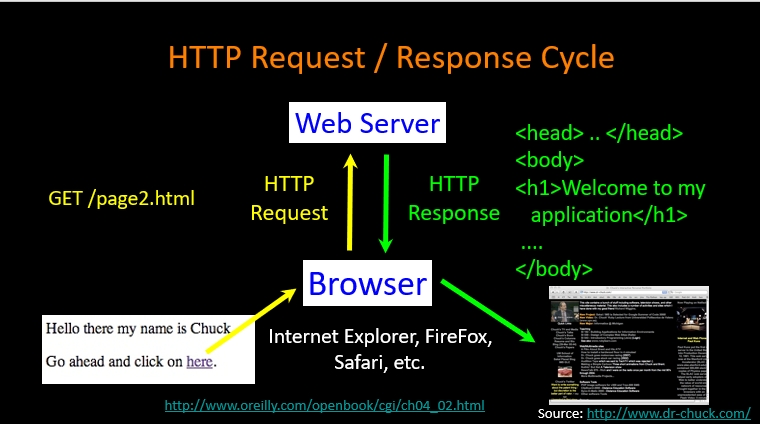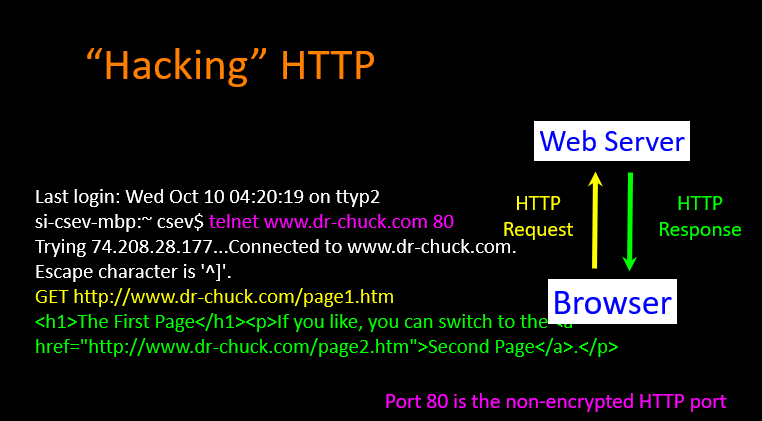Store and Forward Networking
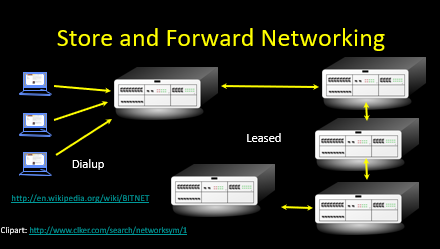
Efficient Message Transmission:Packet Switching(分组交换)
- Challenge: in a simple approach, like store-and-forward, large messages block small ones(延迟问题)
- Break each message into packets(大化小)
- Can allow the packets from a single message to travel over different paths, dynamically adjusting for use(可不同路径)
- Use special-purpose computers, called routers, for the traffic control(路由器来控制数据移动)
Shared Network

- In order to keep cost low and the connections short geographically - data would be forwarded through several routers.
- Network Connection
- Host A-->Router-->Router-->Host B
- Getting across the country usually takes about 10 “hops”
Layered Network Model
- A layered approach allows the problem of designing a network to be broken into more manageable sub problems(大问题拆分为小问题)
- Best-known model: TCP/IP—the “Internet Protocol Suite”(TCP/IP模型)
- There was also a 7 layer OSI: Open System Interconnection Model(7层模型)

Internet Standards
- The standards for all of the Internet protocols (inner workings) are developed by an organization——Internet Engineering Task Force (IETF)
- Standards are called “RFCs” - “Request for Comments”(个人可以查看RFC并提出建议,建议-->草案-->审核通过-->新标准)
Layered Architecture
- The Physical and Internet Layers are like trucks and trains - they haul stuff and get it to the right loading dock - it takes multiple steps
- The Transport layer checks to see if the trucks made it and send the stuff again if necessary
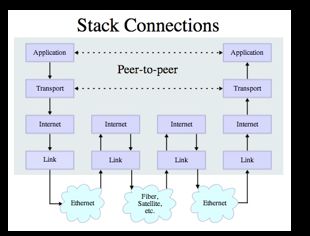
Link Layer(aka Physical Layer)
- phisical
- the lowest layer in the Internet Protocol Suite
- described in RFC 1122 and RFC 1123
- Link Layer Addresses
- Many physical layer devices have addresses built in to them by the manufacturer(制造时就有)
- Wireless Ethernet (Wifi)


Sharing Nicely - Avoiding Chaos
- To avoid garbled messages, systems must observe “rules” (Protocols)
- Ethernet rules are simple
- steps(步骤 !!!)
- Wait for silence
- Begin Transmitting data
- Listen for your own data
- If you cannot hear your own data clearly, assume a collision, stop and wait before trying again
- Each system waits a different amount of time to avoid “too much politeness”
Ethernet(第一个本地计算机网络)
- Invented at PARC (Xerox)
- The first Local-Area-Network
- Connected PC's to laser printers
- Inspired by an earlier wireless network called Aloha from the University of Hawaii
Internetwork Layer(IP)
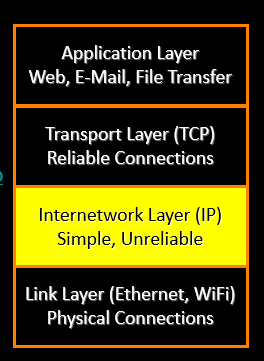
Internet Protocol Layer(实际移动)
- Goal: Gets your data from this computer to the other computer half way across the world
- Each router knows about nearby routers
- IP Is best effort - it is OK to drop data if things go bad...(丢弃)
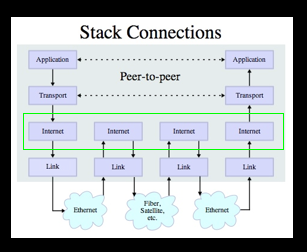
IP Addresses
- The IP address is the worldwide number which is associated with one particular workstation or server(全球性)
- network number(6 bit) + computer number within network(6 bit)
Router tables
The best outbound route for each router record to reach another router, dynamic update, an index
DHCP(dynamic host configuraton protocol动态主机配置协议)
- is given a temporary address (被给了临时地址)
- it can not run in the Internet network. It only applies to local network,
- such as 192.168.xxx.xxxx and so on.
- the non-routable website.(不可路由地址)
TTL(Time-to-live)
- to control the count of hop
- Abandoned from 255 to 0(减到0时认为无法到达,便舍弃)
Transport Layer(负责移动的可靠性)
TCP(Transport Protocol)
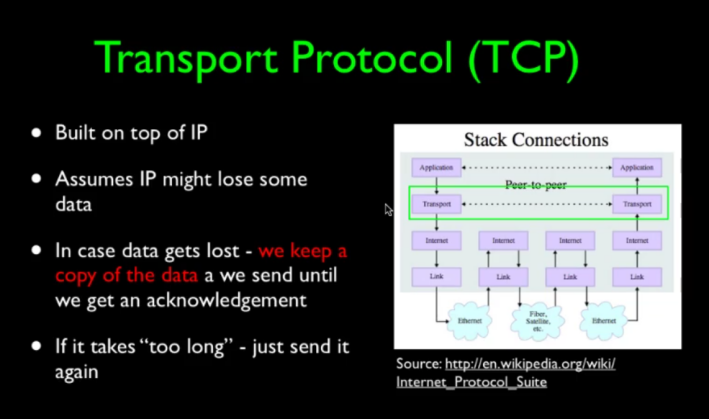
- built on the IP Layer.
- function:to solve some problems that may arise in the IP layer.(弥补Link Layer的不足)
- steps(过程):
- Send and receive feedback(先确认一下)
- acknowledged --> Discard acknowledged packets(确认接受后丢弃)
- Not confirmed --> again(未确认则再发知道成功确认)
Slow Start Algorithm(慢启动算法)(看不太懂)
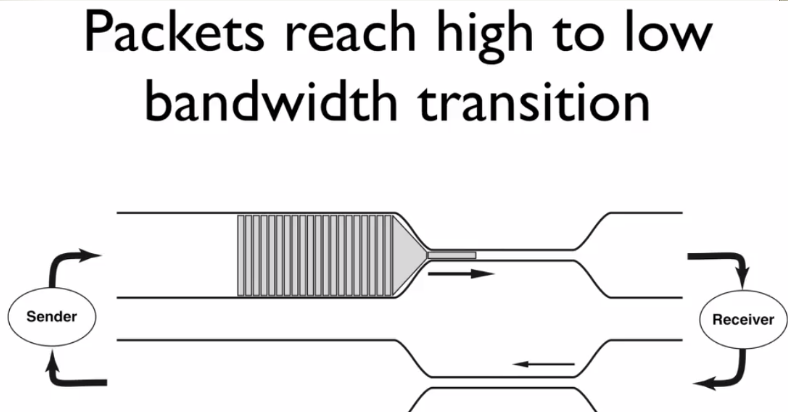
- First send slowly, then slowly increase the speed.
DNS(Domain Name System)(域名系统)
- A way to remember more easily than an IP address.
- IP:left to right : DNS:right to left
- such as:www.si.umich.edu

Application Layer(应用层)
Application Protocol

port
- Ports are dependent on IP, similar to branch paths of IP addresses. Different ports correspond to different functions and services.
- such as:80 , 45
HTTP(Hyper Text Transfer Protocol)
- base on TCP/IP
- client --> click link--> generate links to server --> look up server --> show
- "Hacking" HTTP:pretend browers ,ues "get" commond

